Razor bumps, medically known as pseudofolliculitis barbae, are common. The condition is caused by shaving, which causes curly hair to grow back into the skin. Razor bumps most often affect men and women with coarse or curly hair.
While You can treat the bumps with prescription medications, there are also a few over-the-counter (OTC) remedies that can be effective. Here we will tell you about the five best OTC remedies for razor bumps and why they work.
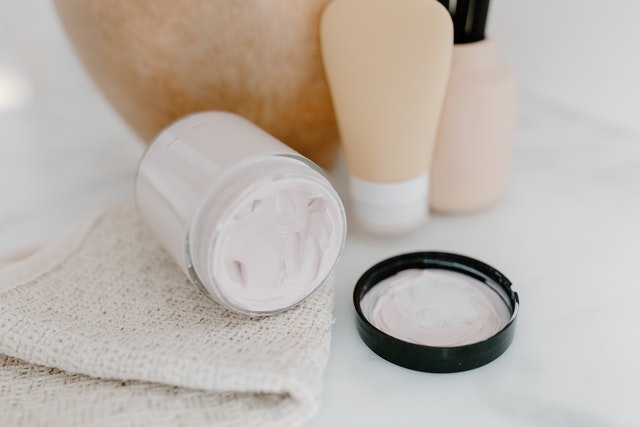
Since ancient times, Aloe Vera has been used for various skin conditions because of its numerous benefits. Aloe vera gel is naturally:
One of the best treatments for razor bumps at home is pure aloe vera gel or products made with natural aloe vera. These products can help reduce the appearance of razor bumps and provide instant relief.
Witch hazel is an all-natural astringent and antiseptic made from the bark and leaves of the Hamamelis virginiana plant. Native Americans used witch hazel medicinally for ailments, including colds, infections, and liver conditions. Today, you can see benefits for yourself by using witch hazel on various skin conditions, including razor bumps.
Razor bumps are caused when hair grows back into the skin after being shaved. That creates inflammation, redness, and itching in the epidermis. Witch hazel soothes and calms the skin. Meanwhile, its anti-inflammatory properties reduce redness and swelling from razor bumps.
Witch hazel products are great to always have on hand if you frequently experience mild to moderate razor bumps. For more serious cases of razor bumps, you might need to check with a physician before applying any topical treatment.
Tea tree oil is a natural remedy that you can use to treat razor bumps at home. With razor bumps, the hair follicles become irritated. Tea tree oil has antiseptic and anti-inflammatory properties that can calm folliculitis symptoms.
There is another reason to consider tea tree oil or products containing tea tree oil after shaving. Razors often cause tiny nicks and cuts on the skin. Tea tree oil may help prevent infection because it is believed to be antibacterial.
You can buy tea tree oil at most drugstores or online. Apply a few drops of oil directly to the affected area, and massage it gently. Do this two or three times a day until the razor bumps have disappeared. If you are using tea tree oil for the first time, start by applying a small amount to a test area to check for sensitivity. You can also add tea tree oil to a bath or shower.
Salicylic acid is a beta-hydroxy acid that works by breaking down the cells in the outer layer of the skin. It leads to the shedding of dead skin cells and helps unclog pores.
Salicylic acid is a topical medicine used to treat acne, psoriasis, calluses, corns, warts, and other skin conditions. Salicylic acid is available OTC without a prescription in up to 2% concentrations.
Benzoyl peroxide is an active ingredient found in many OTC acne medications. It is also the key ingredient in many razor bump treatments. It also breaks down keratin cells in the outer skin layers, causing dead skin to peel off. That opens and exposes ingrown hair cysts, which helps dry and heal them.
Benzoyl peroxide helps unblock pores, which can help prevent and treat razor bumps.
There are many benzoyl peroxide-based treatments available for razor bumps. Some are available as creams, gels, or washes. Others are available as ointments or lotions. Choose the one that works best for you.
Although razor bumps are a common problem for men and women who shave, you don’t have to live with them. For a mild case, try an over-the-counter treatment for razor bumps to reduce itching and minimize redness.
If you try these OTC treatments but don’t see improvement, talk with one of our expert doctors. Razor Bumps, Inc. offers video consultations with expert doctors to treat razor bumps. We will help you get rid of those pesky razor bumps for good!
We know that razor bumps can be embarrassing and frustrating. Let us help you get rid of them for good. We offer a video consultation with a doctor who can help you get your confidence back.
Contact us now for your low-cost appointment that your insurance may cover!
Disclaimer: The contents of this article are for informational purposes only and do not constitute medical advice. The information, graphics, and images on this site are not intended to substitute diagnosis or treatment by a medical professional. Always seek the advice of a licensed physician for any questions you may have regarding a specific condition.
“Aloe Vera”. bcm.edu. Accessed June 3, 2022.
“Benzoyl Peroxide”. ncbi.nlm.nih.gov. Accessed June 3, 2022.
“Salicylic Acid”. medlineplus.gov. Accessed June 3, 2022.
“Tea Tree Oil”. mayoclinic.org. Accessed June 3, 2022.
“Witch Hazel”. drugs.com. Accessed June 3, 2022.
You think you’ve just finished shaving your pubic area, but you notice something. It’s red, itchy, and painful. You have a razor bump in your pubic area.
Razor bumps are common for many people who shave the sensitive skin of their genitals, so if you’re dealing with them, don’t beat yourself up about it. If you get a case of razor bumps around the pubic area, you can treat it right away and take steps to prevent future razor bumps.
Here’s how to treat razor bumps in the pubic area once they pop up (and how to prevent them in the first place).
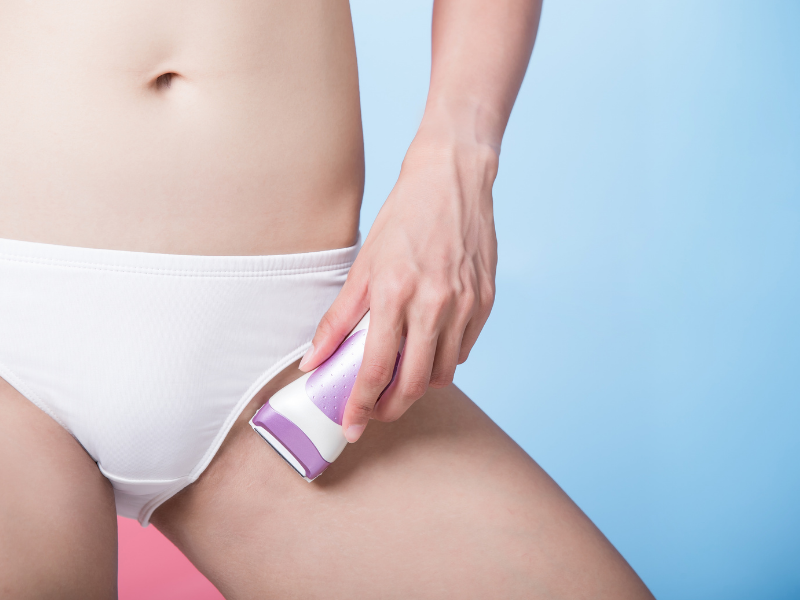
Razor bumps are small, red bumps that can appear after shaving. They’re called “razor bumps” because ingrown hairs from shaving cause them. These bumps develop when hair shafts become trapped beneath the skin’s surface. Ingrown hairs can be painful, itchy, and embarrassing, especially in a sensitive area like your pubic region!
Yes! If you’ve ever shaved or waxed the areas around your genitals, you’re at risk of getting razor bumps. The good news is that if you follow these tips for preventing razor bumps in the future, they’ll be less likely to appear on your body again.
These tips will help keep your skin in good condition and hopefully prevent problems from razor bumps.
If you already notice a red, bumpy rash on your skin, it is too late for prevention. It’s time to focus on treatment.
Make sure to wash the area gently with warm water and soap each day. That will help to cleanse your skin and prevent infection.
Apply a topical cream that soothes razor burn or ingrown hairs, such as aloe vera gel or witch hazel solution.
Apply a warm compress to the affected area for 10 minutes, up to three times per day, to increase blood flow to the area.
If your symptoms don’t go away or become worse, talk to a doctor about other treatments or prescription medications.
If you get razor bumps, treat them right away and take steps to prevent them from coming back.
Razor bumps are no fun, but they’re also nothing to be embarrassed about. Lots of people get them, and you can take steps to prevent them and treat them. Now that you know how razor bumps form and some tips for getting rid of them, give the methods we covered a try!
If you try to relieve razor bumps on your own, but they won’t go away, it’s time to talk to a medical professional.
If razor bumps have you bothered and you want to talk to an online doctor, Razor Bumps, Inc.’s board-certified physicians are available now through easy virtual video visits. Find out more by chatting with us now.
Disclaimer: The contents of this article are for informational purposes only and do not constitute medical advice. The information, graphics, and images on this site are not intended to substitute diagnosis or treatment by a medical professional. Always seek the advice of a licensed physician for any questions you may have regarding a specific condition.
Razor bumps can be a bother. When they show up, you want them gone fast.
Also known as pseudofolliculitis barbae, razor bumps are small red bumps that can occur after shaving. They make your skin look bumpy and feel irritated. When left alone to heal and given proper skincare, razor bumps typically last for about 2-3 weeks. However, severe cases can go on for months.
Razor bumps are a common problem for men who shave their faces regularly, but they can affect women too. In this article, we’ll take a look at what razor bumps are, how to get rid of them, how long they last, and most importantly: how to prevent them from popping up in the first place. Read on to learn more!
After shaving, you may have seen these bumps on your face or neck and wondered how long they’d last. Razor bumps can be frustrating. These ingrown hairs can range from mildly irritating to extremely painful and unsightly.
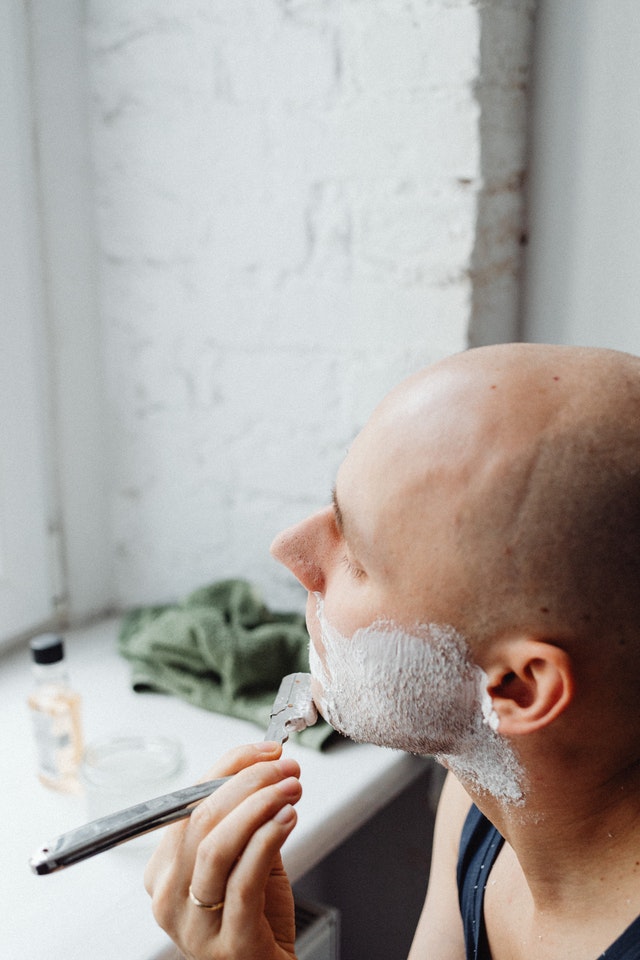
Razor bumps are caused by ingrown hairs (also called pseudofolliculitis barbae), which develop when hair shaves off unevenly and curls back into the skin instead of growing out the way it should. Mild cases of razor bumps will resolve in one to two weeks. Unfortunately, more severe cases may take much longer to heal. Sometimes, razor bumps cause permanent scarring that does not go away. The resulting irritation looks like small pimples that don’t go away with time or regular cleaning.
Luckily there are steps you can take to reduce razor bumps.
If you want to prevent razor bumps, here’s what you need to know:
Folliculitis is a skin condition resulting from ingrown hairs. It’s caused by shaving, which damages your hair follicles, making it easier for bacteria to grow inside them and cause inflammation.
Ingrown hairs are common in the armpits, groin area and face due to these areas being shaved most often. The inflammation and redness present on the skin may last for up to two weeks until the hair falls out or grows back in its natural direction, which will leave you feeling smooth again!
Common causes of razor bumps include shaving too close to the skin and using blades that cut too closely. Razor bumps can also result from shaving in the direction the hair grows. Shaving in this way leaves behind tiny hairs, which then become ingrown hairs when you attempt to push them back out through subsequent shaves. To avoid this, try shaving in the opposite direction of your hair growth (against it).
When it comes to how long razor bumps last and how they’re treated, there are a few factors at play:
If you take care of your skin and protect it from further injury, razor bumps will heal in 2-3 weeks.
You can prevent razor bumps by selecting the right razor and using proper shaving techniques.
The best method is shaving in the direction of hair growth. Avoid using dull razor blades with too much pressure or shaving in one direction without changing your angle after every stroke.
You should also leave your hair alone for long periods to avoid irritation. Trimming or shaving only when necessary will also help reduce irritation by preventing overgrowth of ingrown hairs and keeping the area from becoming irritated from constant grooming.
As you can see, there are many ways to prevent razor bumps from happening. If you follow these tips and strategies, you will be able to avoid razor bumps with ease.
It is important to note that every person’s skin is different, and what works for one may not work for another. You should try out different methods to find one that works best with your skin type and hair texture.
The best treatment for razor bumps is exfoliation and pushing hairs out of the skin through trimming or shaving only when necessary.
Exfoliating your skin will help remove dead skin cells that can irritate and reduce ingrown hairs.
Try using an over-the-counter exfoliant cream for sensitive skin.
If razor bumps persist, you need to talk to a doctor about your skin condition.
You can avoid razor bumps if you’re conscious of how you shave.
Hopefully, you better understand razor bumps and what to do about them. To keep razor bumps from sticking around for two to three weeks, you should try to prevent them altogether. Be sure to follow these simple steps for a safe shave.
Disclaimer: The contents of this article are for informational purposes only and do not constitute medical advice. The information, graphics, and images on this site are not intended to substitute diagnosis or treatment by a medical professional. Always seek the advice of a licensed physician for any questions you may have regarding a specific condition.
Barbershops are a place for men to sit back and relax. They are also a place for gentlemen to discuss sports, politics, and current events. Going to the barbershop is an experience more than an errand for a haircut or beard trim. Barbers are valued for their skill and expertise in cutting men’s hair. So, can they treat skin conditions caused by shaving?
In general, barbershops do not perform any treatment for skin conditions resulting from shaving. For their safety and the well-being of their customers, barbers cannot work with any open wounds or skin that appears infected. Men with razor bumps should not go to the barbershop for treatment but rather seek medical advice from a licensed physician.
Men who suspect they might have razor bumps can try at-home remedies to ease skin irritation or find a doctor to help. To find out more, read on.
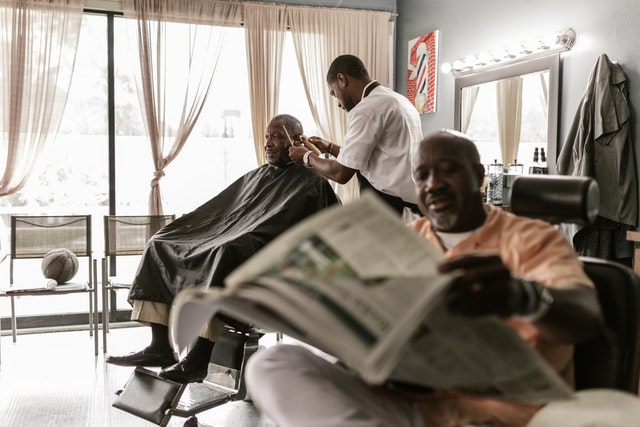
When a customer goes to the barbershop for a shave or trim, the barber will likely ask the client if there are any sensitivities or skin conditions A barber can refuse to shave or cut a person’s hair in some cases. They could turn the client away if the skin shows signs of the following:
Barbers are not licensed to treat skin conditions and are careful not to cause injury. Public health and safety are primary concerns for barbers.
If a man has mild razor bumps on the head or neck, a barber may agree to proceed with the service. Many barbershops apply towels to the face or neck. Warm towels before shaving increase blood circulation to the skin and can soothe irritation. Cool towels after shaving constrict pores and provide a cooling sensation. While both treatments are beneficial for the skin, they are not intended to heal razor bumps.
Men with razor bumps can try at-home remedies to alleviate discomfort and swelling.
Here are some over-the-counter products to try.
Another great do-it-yourself remedy for facial razor bumps is steam treatments. Warm steam on the skin causes pores to open, releasing dead skin cells, dirt, and other debris. Trapped particles in the skin cause pimples and ingrown hairs. In addition, an all-natural steam treatment improves blood flow to the skin, which can help heal compromised skin. Here are steps to try an at-home steam facial.
Consider adding herbs, tea, or essential oils to the boiling water to pamper your skin.
A word of warning, steaming is not recommended for some. Individuals with eczema, for example, can cause skin irritation. If you are unsure if a steam facial is safe for you, ask a doctor.
Individuals can also make an appointment with a doctor’s office or a dermatologist if they have questions about razor bumps.
Thanks to telemedicine, the easiest and fastest way to talk with a doctor about razor bumps is to book an appointment with a virtual physician. Services like Razor Bumps, Inc offer inexpensive, convenient appointments for skin problems for patients who do not have a doctor or cannot get in to see their regular doctor.
Summary
In short, men with razor bumps can try to alleviate skin irritation from razor bumps or find a doctor to help. While barbers are highly skilled at their craft, they are not qualified to treat any skin condition. Razor bump treatment is best left to the professionals.
If you have questions for the Razor Bumps, Inc physicians, don’t wait! Contact us now.
“Code of Ethics”. americanbarber.org. Accessed April 14, 2022.
“Is Steaming Your Face Good for Your Skin?”. health.clevelandclinic.org. Accessed April 14, 2022.
Disclaimer: The contents of this article are for informational purposes only and do not constitute medical advice. The information, graphics, and images on this site are not intended to substitute diagnosis or treatment by a medical professional. Always seek the advice of a licensed physician for any questions you may have regarding a specific condition.
Have you ever noticed a rash on your legs after shaving? If so, it could have been razor bumps. So, what do razor bumps look like on the legs?
Razor bumps on the legs look like small pimples or ingrown hairs. It is important to differentiate between razor bumps and bumps that appear after shaving. Razor bumps is a true medical condition formally known as pseudofolliculitis barbae. Bumps that show up as a rash on the legs after shaving could be something else. What some people refer to as razor bumps, actually aren't.
There are also a few other bumpy skin conditions associated with shaving. Razor bumps are more common in some parts of the body and certain skin types. If you see something that looks like razor bumps, here’s what you need to know.
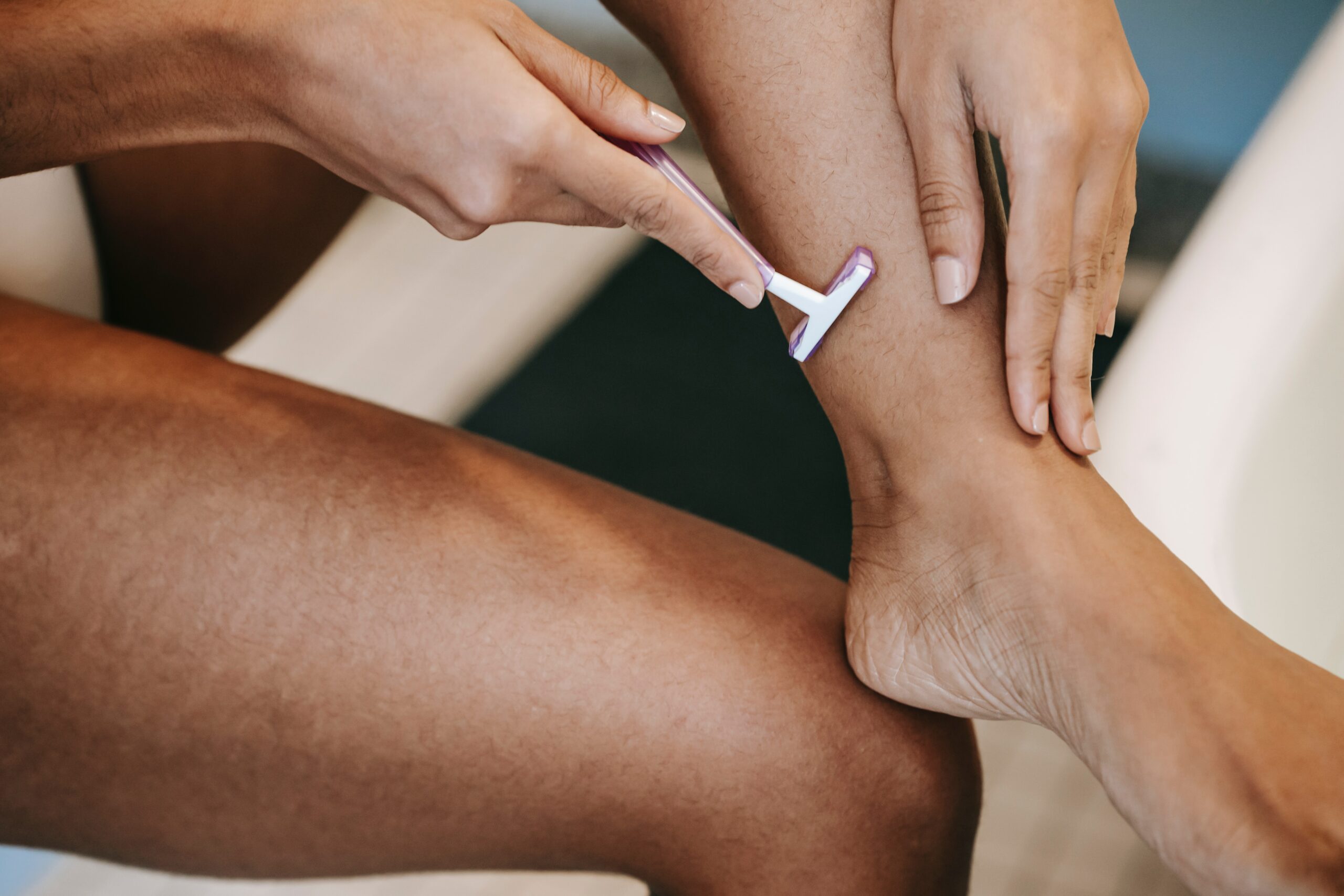
Shaving often irritates the skin. As a result, it can cause problems, such as razor bumps. Razor bumps on the legs might look pink or red. And they are often swollen.
The medical term for razor bumps is pseudofolliculitis barbae. In particular, it is caused by hairs cut by a razor with a pointy or jagged edge, like a tiny knife. Sometimes, these short, coarse, curly hairs curl and grow back into the skin. In other words, razor bumps are a type of ingrown hair. Only a medical professional licensed to diagnose and treat conditions can tell for sure if it's razor bumps.
Razor bumps usually appear 24-48 hours after shaving. The good news is that razor bumps typically do not appear on the legs. Razor bumps usually cause ingrown hairs on the face and neck for two reasons:
An exception, though, is the upper thigh and groin area. This area is more likely to be affected by true razor bumps. That is because hairs in these regions are likely to be thicker and wavy or curly.
Bumps on the legs after shaving that are not located in the thigh or groin area are probably not razor bumps. They could be another skin condition.
Bumps on the lower legs after shaving might be razor burn. Razor burn is another type of rash that looks like small red bumps. But it is not caused by ingrown hairs. So, it usually shows up in only a few hours after shaving.
Razor burn is usually not as serious as razor bumps and resolves on its own quickly. It is caused by skin irritation related to the razor, shaving products, or just the shaving method. While it causes a burning sensation and looks bad, it usually won’t cause any long-term damage.
Another reason you might have bumps on your legs after shaving is an irritation caused by the razor or the shaving cream. Skin sensitivities can show up as a rash. topics/sensitive-skin" rel="noreferrer noopener">Itching is a good sign that someone might have skin sensitivity.
Folliculitis is another condition that could cause bumps on the legs after shaving. A hair follicle is a pocket in the skin where the hair root grows. Folliculitis is an inflamed, irritated, or infected hair follicle.
Sometimes the skin pocket or hair follicle is injured through shaving. When bacteria enter the hair follicle, it can cause infection.
Folliculitis, skin sensitivities, and razor burn are three conditions that might look like razor bumps. People often refer to them as razor bumps because they cause spots on the skin, usually after shaving. But each condition has a different cause, so they are treated differently.
So how can you tell what the rash on your leg is?
These are four skin problems that commonly appear on the legs. If you noticed bumps from shaving on your legs and are unsure if you have razor bumps or something else, talk to a doctor about it. A virtual physician can look at your skin through a secure video visit and make recommendations to help you treat the problem. They can help you clear up your skin in no time, and you can say goodbye to unattractive bumps on your legs.
Have you experienced problems from shaving for your job? If razor bumps have you worried, you need to talk to one of our doctors. Meet a top board-certified physician online through a convenient virtual video visit. Find out more by chatting with us now.
Disclaimer: The contents of this article are for informational purposes only and do not constitute medical advice. The information, graphics, and images on this site are not intended to substitute diagnosis or treatment by a medical professional. Always seek the advice of a licensed physician for any questions you may have regarding a specific condition.
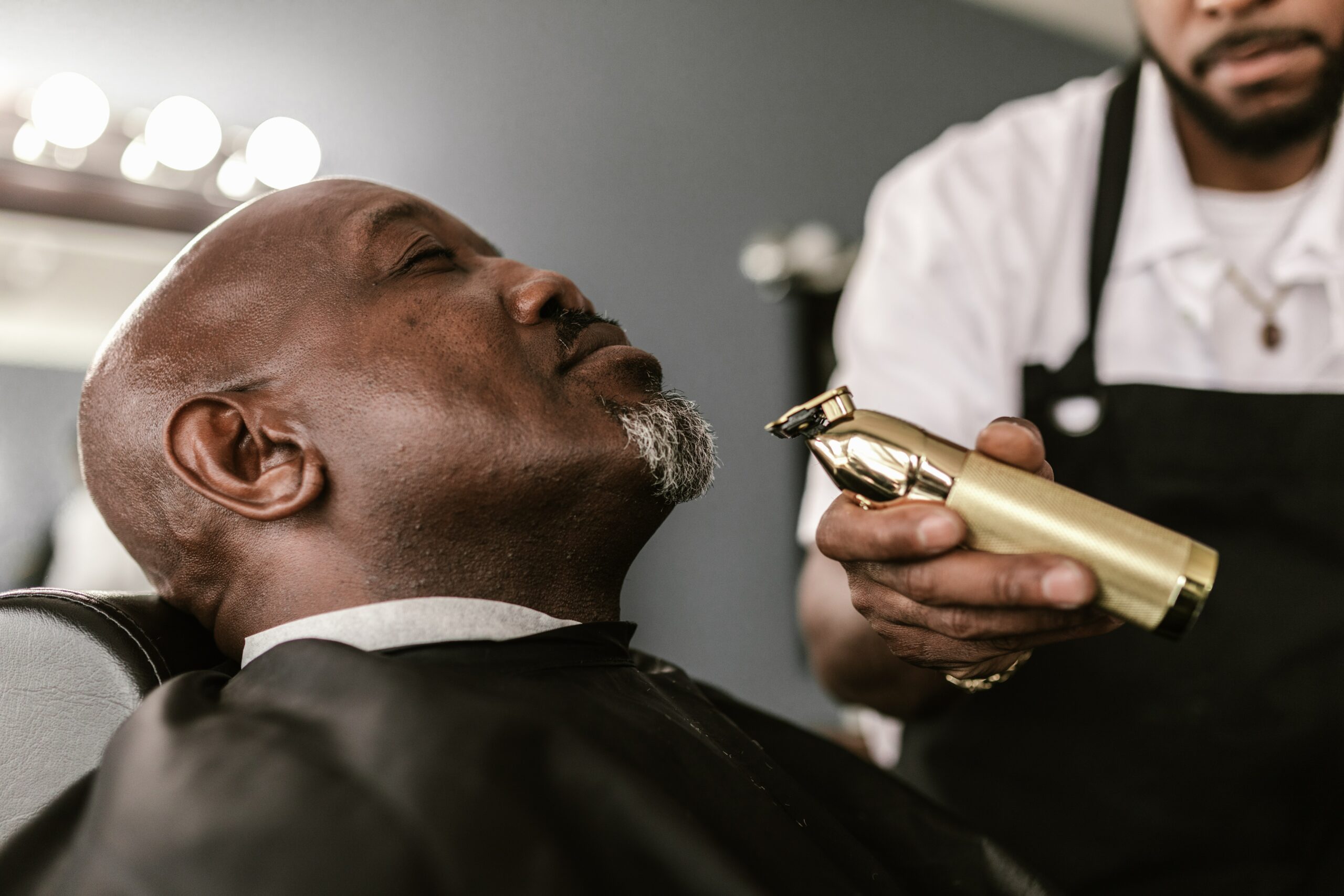
Have you ever noticed bumps on your face after shaving? If so, perhaps you’ve heard of razor bumps and assumed that’s what those little ingrown hair-like cysts were. But were they razor bumps? And what do razor bumps look like on the face?
Razor bumps look like small ingrown hair cysts. They may vary in color depending on a person’s skin tone. Typically, razor bumps are raised and irritated. The skin bump may look red, pink, or a darkened color. Sometimes, they become infected and may look yellow or whitish in the center.
So how do you know if you truly have razor bumps? Moreover, what can you do if it looks like razor bumps on your face? Keep reading if you or someone you know has had these facial bumps and you want to know more.
Razor bumps is the name of a skin problem that shows up on the face and neck after shaving. Usually, these bumps are small. Razor bumps typically measure only 2 to 5 mm in diameter.
If you notice bumps on your face, you can look closely at the face with a mirror. The small cysts will appear near hair roots. Watch for signs of irritation at the hair root. Signs of razor bumps on the face can include:
Facial hairs cut with sharp edges, like a razor blade, can grow back into the skin. As a result, a shiny hump or cyst forms on the face. They are also called shave bumps or barber’s bumps.
Men with coarse or tightly curled hair see razor bumps more often. This hair type grows easily back into the skin after shaving. More than half of African American men have had this condition.
Only a licensed physician can diagnose razor bumps. If you have signs of these barber bumps and they don't go away, it's best to talk to a doctor.
The medical term for razor bumps is Pseudofolliculitis Barbae. Traumatic folliculitis of the beard is another name for it, even though razor bumps can appear in other body parts. The condition is caused by shaving. Hence the name, razor bumps.
Bad shaving habits can worsen razor bumps. For example, pulling the skin tightly or pressing on the razor while shaving can cause hairs to be cut too short. It can aggravate razor bumps. Also, using dull razor blades can cause trauma to the skin. They pull the hair shaft during shaving, which can worsen razor bumps.
Also, men who suffer from razor bumps find that shaving too frequently makes matters worse. If you suspect you have razor bumps on the face, you should avoid shaving the affected area until it is healed.
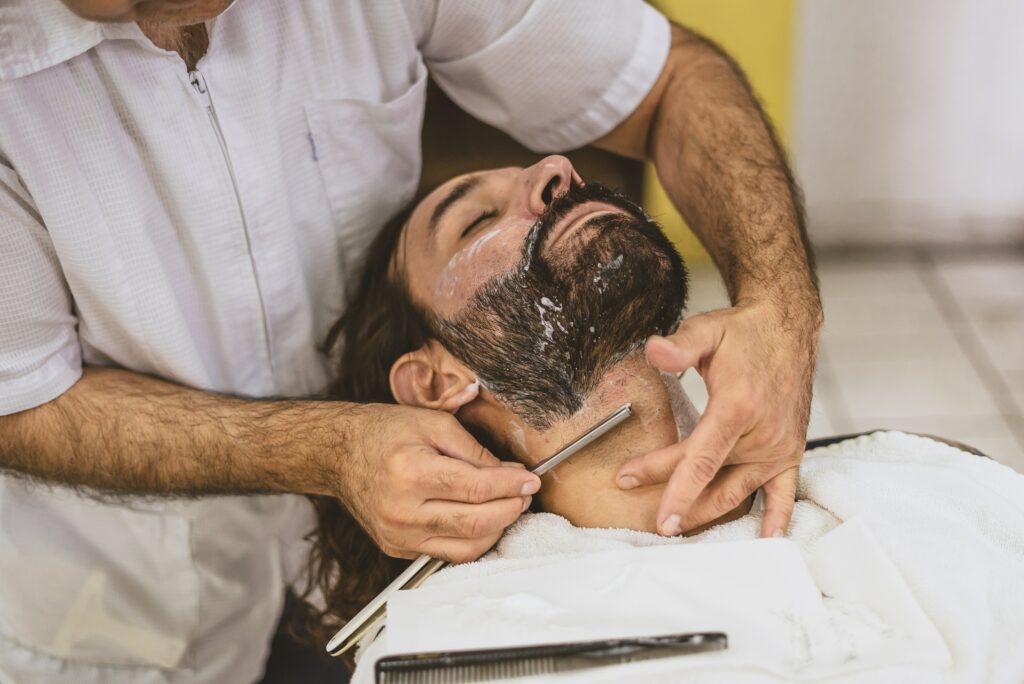
You can do several things if you think you have razor bumps. Some you can do at home by yourself. Others may require you to see a doctor.
The easiest and most effective way to treat razor bumps is to stop the cause of the problem. Yes, you guessed it. That means to stop shaving. Allowing facial hair to grow freely can stop the irritation. According to the American Osteopathic College of Dermatology, letting a beard grow naturally is a 100% effective treatment.
Another solution is to train the hair. Some doctors recommend brushing facial hair to encourage it to grow a certain way. Doing so may decrease razor bumps.
A beard brush can help tame unruly hairs. Starting near the ears and brushing down toward the chin in smooth strokes can encourage hairs to grow out straight. Men should brush face hair at least once a day.
The third solution for razor bumps on your face is to try changing up your shaving routine. Try different products or methods to reduce bumps.
Softening the hairs before shaving in the shower or with a hot wet towel on the face helps. Men can also look for lubricating shave gels or try an electric razor. Different methods can help lessen bumps.
If you try these at-home solutions but still have a hard time with razor bumps, then it might be time to talk to a doctor.
So now you know how to prevent bothersome bumps on your face and how to tell if you’re dealing with razor bumps. The ingrown hair-like cysts on their face can vary slightly from person to person. Still, razor bumps are usually swollen, discolored, and bothersome.
If you are still unsure you have razor bumps on your face and want to talk to an expert, go ahead and chat with us to find out more about Razorbumps, Inc. We have top board-certified physicians available to see and treat your skin problem by video appointment now. To find out more, click BOOK APPOINTMENT.
Disclaimer: The contents of this article are for informational purposes only and do not constitute medical advice. The information, graphics, and images on this site are not intended to substitute diagnosis or treatment by a medical professional. Always seek the advice of a licensed physician for any questions you may have regarding a specific condition.
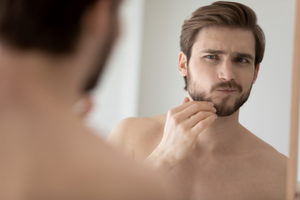
Pseudofolliculitis barbae is a common skin condition that many adults will face at some point in their lives. With so many people affected, you might wonder how it is diagnosed.
Pseudofolliculitis barbae is typically diagnosed by physical examination by a licensed healthcare provider, such as a doctor or advanced nurse practitioner. Medical tests, including studying skin tissue samples under a microscope in a laboratory, may also aid in the physician’s diagnosis.
So how does a doctor examine pseudofolliculitis barbae? And how can someone find a physician to treat this problem? Read on to find out.
Want to speak to a board certified physician? Book an appointment today!
Anyone who shaves is at risk of developing "shave bumps," "razor bumps," or ingrown hairs. But African American men are affected most. Studies show that todate.com/contents/pseudofolliculitis-barbae#H87492034">between 45% and 83% of African American men who shave will develop pseudofolliculitis barbae. Men of other ethnicities and women too can experience this problem. It most often appears in the face but can also show up under the arms, in the bikini area, or the legs.
Physicians or practitioners can diagnose pseudofolliculitis barbae tologic-disorders/hair-disorders/pseudofolliculitis-barbae#v38068013">by physical examination at a simple doctor's visit. With any physician encounter, the first part of the diagnosis will be an interview.
The doctor will ask the patient questions to figure out what is wrong or what the complaint is. Some common questions a provider might ask when diagnosing pseudofolliculitis barbae are:
In addition to taking a history, the doctor will observe the skin for any changes. Small red to-avoid-bikini-line-bumps-2/">bumps, tenderness, and itching are all signs that could alert the doctor to a possible diagnosis of pseudofolliculitis barbae.
Finding a doctor for pseudofolliculitis barbae is easier than ever. A dermatology or skin specialist referral may not be necessary. Many primary care doctors can diagnose and treat this problem with a quick check-up.
There is also good news for patients who do not have a doctor. When someone doesn't have a doctor or is unsure how to find one, a virtual physician is a great option. Online doctor visits are often less expensive than going to a doctor's office. And in many cases, patients can book them faster. Most virtual physicians offer convenient appointment times, and some even have same-day bookings.
Whether online or in-person, it is best to contact the doctor and ask for an appointment to evaluate a skin condition. Give the doctor as much information as possible. If you think it's pseudofolliculitis barbae, then let the provider know when you book your visit.
A licensed healthcare provider is the only one who can say for sure if a skin rash might be a case of pseudofolliculitis barbae or something more serious. Luckily, an appointment to see a physician can be simple and inexpensive. Relief may be as close as a phone call or video visit today.
Our caring experts can help answer your skin questions. To meet a top board-certified physician, book an appointment today.
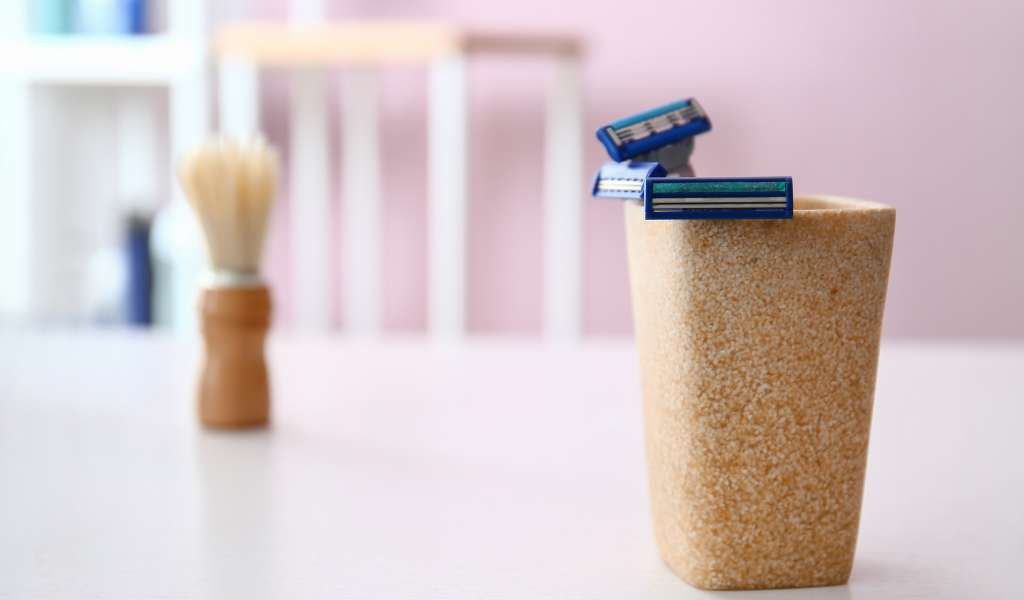
Day One after shaving, skin feels nice and smooth. So why does Day Three feel bumpy and painful? Is your razor causing the bumps? Well, that is a common question.
Shaving can cause unsightly and bothersome razor bumps. In short, the type of razor and how it is cared for certainly contributes to skin irritation. Hence, changing your razor can reduce razor bumps and improve the skin’s appearance.
To find out which razor you should be using and how to care for it, read on.
Razor bumps is a term that is used to describe the skin irritation that commonly appears 2-3 days after shaving. Men may see this condition on their faces, while women can experience razor bumps from to-avoid-bikini-line-bumps/">shaving the bikini area. Essentially anyone using a razor for hair removal is at risk for razor bumps.
There are many types of razors available today. Each type of razor is different in terms of cost, convenience, and use. Here are some pros and cons of the common types of razors for shaving.
| Type of Razor | Pros | Cons |
| Electric Razor | Faster shave Convenient for on-the-go use Wet or dry | Requires batteries or power More expensive Requires maintenance/cleaning |
| Straight Blade | Lower risk of skin irritation No pulling/tugging at the follicle Better precision | Most expensive The learning curve to use Takes more time to shave and requires products |
| Disposable cartridge, double or triple blade | Easy to use Easy to replace Less expensive Closer shave | Risk of nicks/cuts Replace after 4-5 uses Going over areas repetitively increases skin irritation |
The key to selecting a razor that won't cause bumps is to consider how the razor works.
Most electric razors snip hairs off between multiple rotating blades. Some may pull or tug the hair, which can irritate the follicle. Pulling hairs before cutting also means that blades will release the hairs below the skin's surface. While that can mean a close shave, it can also be a problem. Growing under the surface may lead to ingrown hairs.
Choosing a razor with the least number of blades will help reduce razor bumps too. Disposable razors with two or three blades usually work by catching the hair on the first blade and cutting it off with the second blade. A single-blade and straight razors allow a clean cut without tugging hair or leaving a jagged edge.
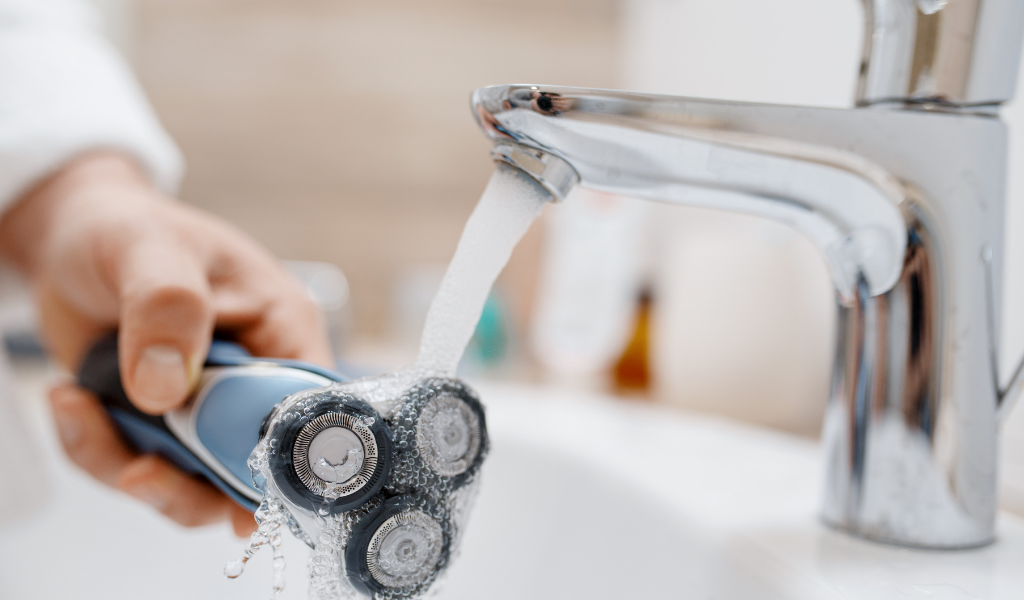
Properly caring for a razor can also help prevent razor bumps. Here are some keys to razor care that will help to prevent razor bumps:
No matter what type of razor you choose, keeping it clean and protecting the blades before, during, and after use can help reduce razor bumps.
Now you know how to choose a razor and how to care for it. These two steps can reduce the burden of razor bumps. If you’ve tried changing your razor but still battle razor bumps, it might be time to talk to a doctor. In some cases, razor bumps can be severe, or lead to more serious conditions.
To talk with one of the top board-certified physicians, book an appointment below. Our caring experts can help answer your skin questions.
Disclaimer: The contents of this article are for informational purposes only and do not constitute medical advice. The information, graphics, and images on this site are not intended to substitute diagnosis or treatment by a medical professional. Always seek the advice of a licensed physician for any questions you may have regarding a specific condition.
Tshudy, M. & Cho, S. (2021, January 30) Pseudofolliculitis barbae in the U.S. military, a review. Military Medicine, Volume 186, Issue 1-2. Retrieved from https://doi.org/10.1093/milmed/usaa243
Nussbaum D. & Friedman A. (2019, March) Pseudofolliculitis barbae: A review of current treatment options. Journal of Drugs in Dermatology : JDD, 18(3). Retrieved from https://europepmc.org/article/med/3090932
Eske, J. (2019, July 29). Causes and remedies for itchiness after shaving. Medical News Today. Retrieved from today.com/articles/325886#causes">https://www.medicalnewstoday.com/articles/325886#causes
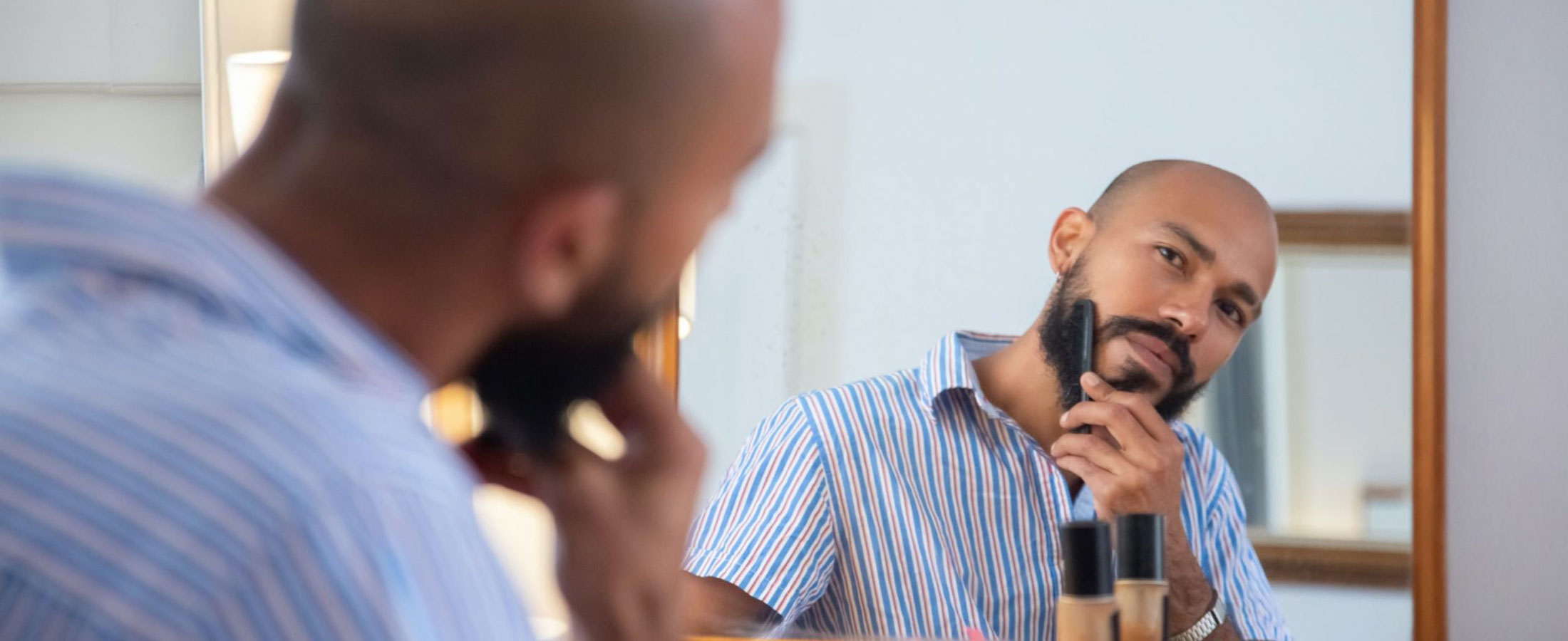
A shaving waiver is a type of medical release or exemption form. Men who have skin conditions may need this form for work.
Shaving waivers are also called “no-shave waivers.” They are for men with certain skin conditions. Sometimes shaving causes serious skin problems. A medical doctor can complete this release to show why a man should not be required to shave his face.
Why would an individual need a shaving waiver, and where can you get one?
The shaving waiver shows employers and supervisors of organizations that it would be unhealthy for a man to shave. A shaving waiver must be necessary to prove that an individual should not have to shave for medical reasons.
For some men, facial shaving causes:
According to to-dictate-the-terms-of-m/" rel="noreferrer noopener">Kennard Law P.C., “from a legal perspective, employers may require male employees to shave as long as it does not infringe on their civil rights or cause undue hardship.” For this reason, it may be necessary to show proof that shaving creates a problem for the individual.
Speak to a virtual doctor today about a shaving waiver!
Some men in sales or marketing, law enforcement, or sports may be required to shave their faces. Other jobs that require men to be clean-shaven include those where employees may be exposed to fire or hazardous chemicals and would be required to wear respirator equipment.
In the military, this waiver is also called a military shaving profile. The Department of Defense expects its male members to maintain zero visible facial hair, other than a neatly maintained mustache, when in uniform. This requirement stems from the five elements of dress and personal appearance: neatness, cleanliness, safety, uniformity, and military image.
In some cases, when shaving causes serious health concerns to the individual, this medical form may be necessary.
Do you need a shaving waiver? You can schedule a virtual doctor visit with one of our board-certified physicians about a shaving waiver.
We are now offering evening and weekend appointments. My Virtual Physician treats skin conditions and much more. Our caring experts provide telemedicine services for your healthcare needs, all from the convenience of your home.
If you have suggestions for other topics you want to read about, let us know! Don’t forget to follow us on social media.

Masks have become a permanent accessory for many U.S. workers. Unfortunately, facial hair makes masking difficult. Some workers required to wear personal protective equipment, like respirator masks, find it especially hard. You may even wonder, how can men with full beards wear N95 masks?
An N95 respirator mask is a protective device made to fit tightly against the face to filter 95% of particles from the air entering the nose and mouth. As a result, men with full beards cannot wear N95 masks safely or effectively. Facial hair that comes between the skin and mask edges prevents a tight fit and good seal.
So what can men do if they have facial hair but need respiratory protection? There are options for men in such situations. Read on to find out.
Many jobs require respiratory protection. Here are just a few of the workers that may be required to wear an N95 mask in on-the-job situations.
In many of these jobs, facial hair is not allowed. Therefore, tory?id=69916196" target="_blank" rel="noreferrer noopener">some men choose to shave their facial hair.
Unfortunately for some of these workers, going clean-shaven causes problems. Sometimes shaving causes adverse effects.
The face and neck are sensitive parts of the body. Facial shaving may result in some very uncomfortable skin conditions. Problems created by shaving may include folliculitis, painful skin infections, and hyperpigmentation. For men suffering from significant health conditions like these, limiting or even avoiding shaving may be necessary.
A shaving waiver, also known as a shaving profile or “no-shave waiver,” can help individuals with certain conditions. A shaving profile is a medical release or exemption form. The document, completed by a physician, explains why a man should not be required to shave his face due to health concerns.
Shaving waivers allow men to forgo shaving and get the right respiratory protection for them. Men with facial hair do not have to risk inhaling unsafe vapors.
Some respirator masks do not require a face seal. These types are a better option for bearded employees.
Specifically, positive-pressure respirators worn over facial hair or beards work to filter the air. A hood-and-helmet type mask uses continuous airflow to protect employees.
One example that is available to workers is called the Powered Air Purifying Respirator (PAPR) mask. This loose-fitting respirator uses a blower to pass air through a filter before sending it to the face. Typically, PAPR masks are lightweight and battery-operated. Also, PAPR masks do not require Fit-Testing.
One drawback is their cost. Most employees would not want to invest in their own PAPR. Those looking for a PAPR respirator can purchase a simple version online for around $100. However, some are upwards of $1000. Batteries and chargers may double the expense.
Although these masks are more costly, they offer superior protection. According to tomerics/" target="_blank" rel="noreferrer noopener">this article by the Center for Disease Control and Prevention (CDC), a PAPR mask may offer an Assigned Protection Factor (APF) of 1000, where an N95 respirator only has an APF of 10. The higher the protection factor, the safer it is.
The use of a PAPR mask does require a physician’s medical evaluation. It is a respirator, and therefore OSHA’s requirements to evaluate an employee before requiring the mask applies to this type.
Men with full beards can find respiratory protection that won’t cause health problems or skin conditions. The first step is a medical evaluation by a licensed physician.
Men interested in finding out if a PAPR mask or shaving waiver for their employer would be right for them should talk to a doctor.
My Virtual Physician now offers consultations for shaving waivers in some states. Fill out the contact form below to speak to one of our board-certified physicians about a shaving waiver.